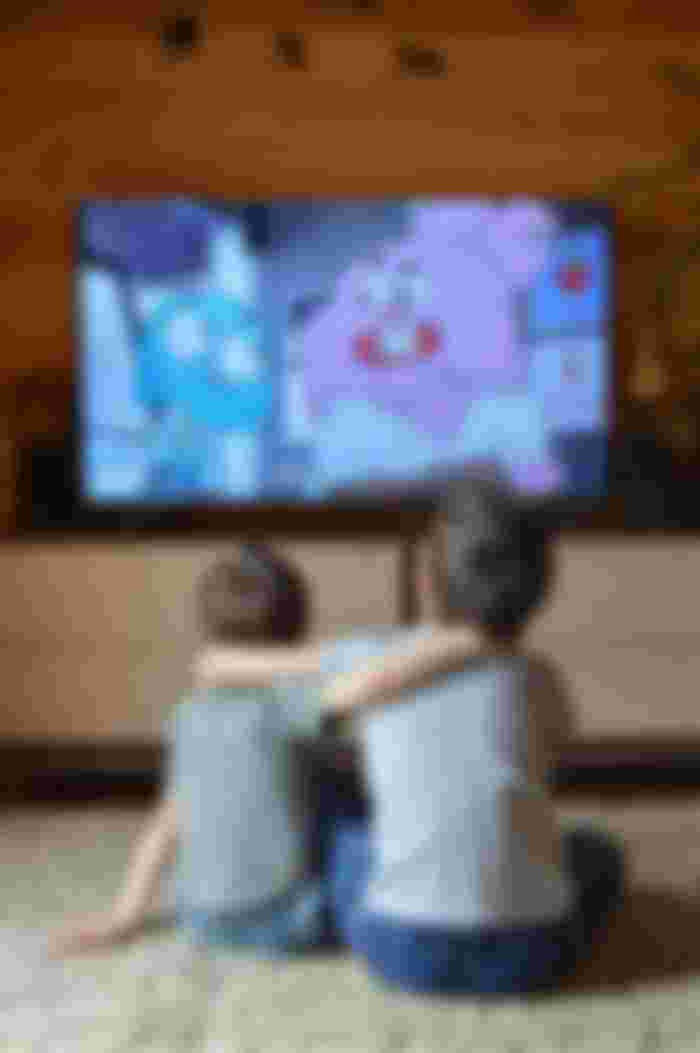
There is not yet in the literature of child psychology and childhood psychology what explains the secret of children's passion and passion for animals, birds and cartoon characters - for their development - and borrowed from them throughout the development of societies, civilizations and cultures, and scientists have so far been unable to explain the attachment of a child in his early months to the sounds of animals and chirps. Birds, and what makes him stick in front of the cartoon scenes that move on the TV screen, or the screens of smart devices, to the extent that they completely separate him from what surrounds him in terms of attention to her, and psychological attraction to her! What does that little kid understand from her? Why do you gain his attention and attention, and why do you please, please, amuse, and laugh at him? Millions of children can spend long hours in front of the cartoon without getting bored or bored .. What do they understand of it, even if it speaks to him in languages completely different from his language? And what is he laughing at her? She certainly addresses him in a language that we adults do not understand! Khorshid Harfoush (Abu Dhabi) Children usually start watching cartoons at the age of six months, and this hobby continues until they reach the age of two or three to become enthusiastic followers of these programs, as the child these days has become more interested in cartoons and cartoons, which have become an essential part From his day. Many experts and specialists believe that television - modern electronic displays, screens of mobile devices, iPads, etc. - was and remains one of the most effective tools for mass communication on children, due to the scenes, images, colors, drawings, movements, gestures, symbols, and signs it contains. Each of them has a specific goal, and unlike other communication tools, it addresses the senses of hearing and sight together, and thus its effect is stronger and faster than other tools and means of communication. Therefore, we see it as an important tool used to participate in the process of education, education and entertainment, thus becoming an essential pillar in every home. Attitudes Children frequently watch TV, especially animation, with the ability to attract children through the development of imagination and the aesthetics of technology that distinguish them. It makes him stuck in front of TV screens for several hours, watching his favorite programs and merging with them as if they are part of the truth, affecting his psyche, mind and impression of the reality of life, so that television has become a great source of anxiety and fear for parents and educators, as they watch their children turn into mere dolls, moving with their feelings, And its interest, and its temperament with the heroes of cartoon cartoons, and subject to the conditions of the consumer culture that dominated this industry and its trends, so much so that it has become a profitable commodity for the commercial and consumer promotion of all products, clothes, food and tools for children. Names and shapes Naqshin Hussain, the educational specialist, considers that the child spent long hours in front of the cartoon as a behavior, because the child sits for hours in front of the television, watching it without doing any positive action, he receives the viewer and imitates it in his actions and behavior without knowing its negativity and positivity. Therefore, we see him acquiring a pattern of violence, and to it the reasons for his imitation of the violent scenes that cartoon characters make to animals or their beloved cartoon characters, and the effect is not limited to that only, it may extend to changing the child's view of his reality, in order to his imagination that the events of the fictional animation are his reality. ». She adds: Perhaps the names and shapes of cartoon characters have evolved a lot during the past half century, and although they derive their identity from imaginary or mythical creatures, or animals and birds, and aliens that do not exist, children all over the world know of them: Disease and toxins. Abdelaziz Faraj, a social worker, believes that there are many studies confirming that the effect of films and cartoon characters on children is a cumulative effect, that is, this effect does not appear from following these films or series over a period of one or two months, but rather is a cumulative result that will lead in the distant future. To dangerous results, especially those that display a great deal of violence, imagination, magic, and torpedoing religious and divine principles and beliefs, and teach them revenge methods, methods and how to theft and crime, directly and indirectly. Cartoons and cartoons directed at children can be very dangerous and turn into deadly toxins. He explained that the danger in this is when these films are issued by a society that has its environment, thought, values, customs, traditions and history, then we find the recipient children belonging to another environment, culture, society and civilization, so they will try to coexist with these actions and integrate with their events and ideas, but within the framework of their privacy and identity. That imposed on them by their society and their environment, so these films and series in this case become like a drug that was made for a specific disease, then it is taken to treat another disease, and the result becomes a new disease. Effects As for Amal Mabrouk, an Arabic language teacher at Al Mushrif School in Abu Dhabi, she says: There is no doubt that cartoon characters and cartoons have a strong influence on the child's daily behavior, and the change in the child's speech begins through his use of the words and methods he hears. Likewise, when the child relates to a specific hero, he wants all his possessions and tools to be painted on his beloved personality, and so we notice that instead of teaching the child discipline in his behavior, we see him go to school while he is surrounded by the personality that he is attached to. He added: These films and cartoons can present good values and morals to the child, but they make him receive these values and morals through a new environment far removed from the environment and the Arab-Islamic culture in which he lives, so he tries to deal with them with his usual innocence, so that he has contradictory psychological motives. , Between what he receives, and what he lives in the family, the environment and society. Maitha Al Qamzi continues the school of: Hidden messages, the psychological and educational expert, Dr. Karima Al-Eidani, believes that the negative effects of the cartoon characters can be summarized in that they consecrate Western culture in clothing, food and housing, which leads children to a kind of rebellion against their lives that reaches the level of the child's disengagement from his reality and his connection with Western societies, especially that the example provided His name is often western, her dress and customs. They also affect children emotionally and make them stony-hearted, have little sympathy for the pain and suffering of others, and often delude the child that violence is a natural part of our daily life, and that violence is justified. On the other hand, we see the child who sits in front of the screen for long hours, and surrenders to it without doing anything but listening without movement, as the cartoon characters live for him, think about him, see him, listen to him and give him the required ready-made solutions, thus disrupting the forces of thought and impeding the development of the personality and its independence .



I still often watch cartoons. Actually Anime not Cartoon. Keep going dear that's an wonderful article of you